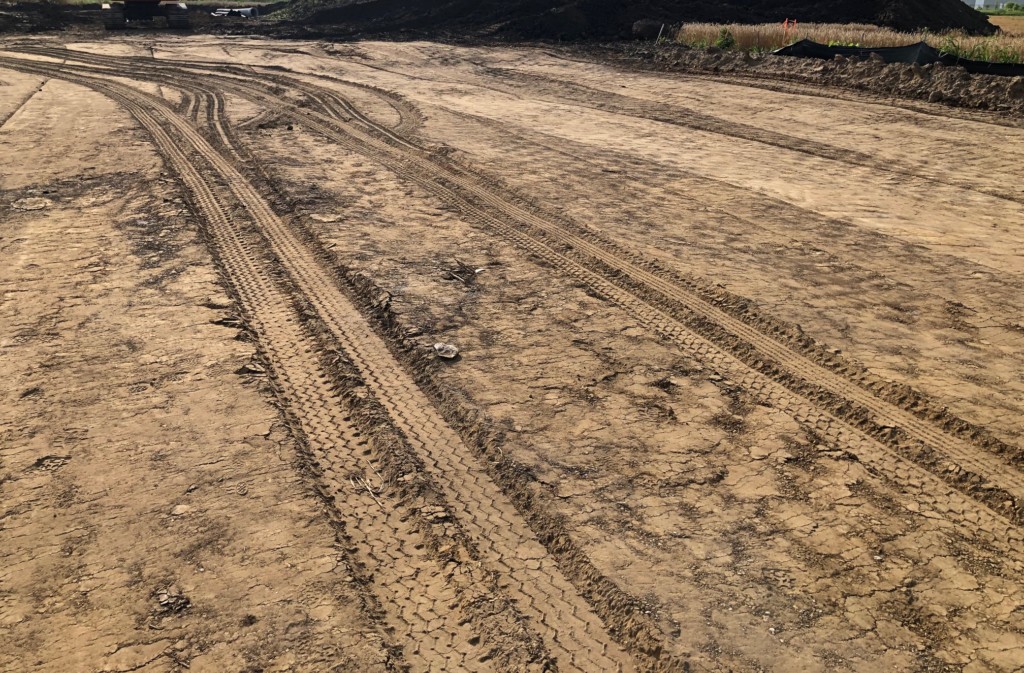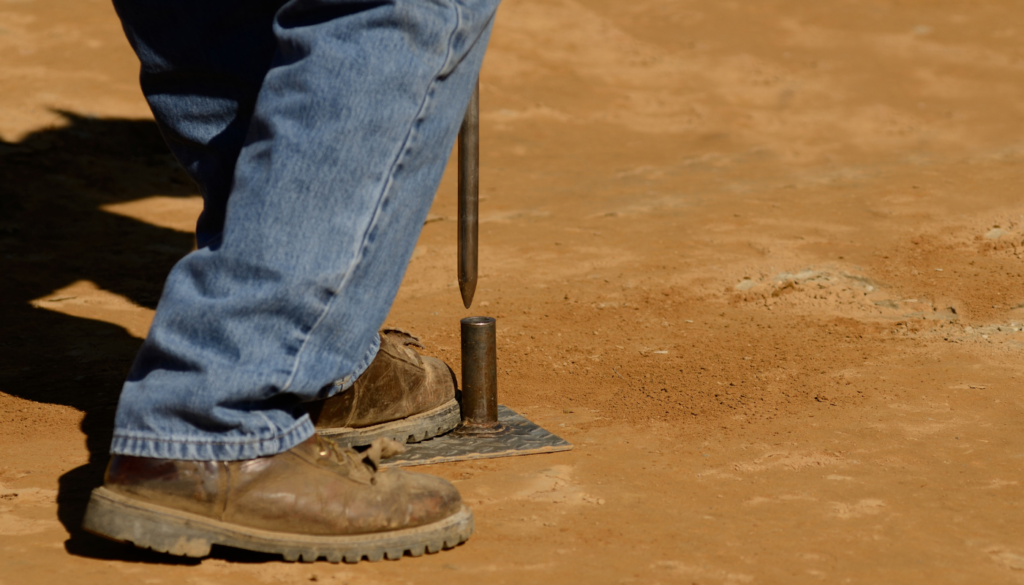Having trouble identifying fill soils vs. native soils? Sometimes it can be completely obvious and other times not so much. The best way to get good at distinguishing between the two is by visually observing the soils over and over.

In the photo above, the side walls of the excavation consist of fill material. The layer of crushed limestone within the side walls of the excavation is a clear indicator of fill material. Exposed at the base of the excavation is native gray brown lean clay. The color of the lean clay at the base of the excavation is typical for topsoil to clay transition. You can see the color of the fill soils above the gray crushed limestone are inconsistent compared to the color native soils at the base of the excavation. Also, the soil structure is inconsistent.

In the photo above, the color of the soils appear to be inconsistent. However, the soils above are actually native soils. The black spots within the lean clay soils are root decay. Also, there are continuous gray seams within the clay, which is a good indicator of native soils.

In the photo above we see a few feet of dark brown/black lean clay with gravel and sand fill material. As you can see, the soil structure is very inconsistent and loose. Near the bottom of the excavation we see a change from dark brown/black lean clay to a native brown lean clay.
In conclusion, there several ways to identify fill material. Look at the structure of the soils, are they consistent or a disordered structure? Is there a layer of topsoil that separates the native from the fill material? Do you see any man made materials such as concrete, brick, slag, bottles, etc.? Does the topography of the land appear to be natural? Answering these simple questions will help you identify fill materials.







